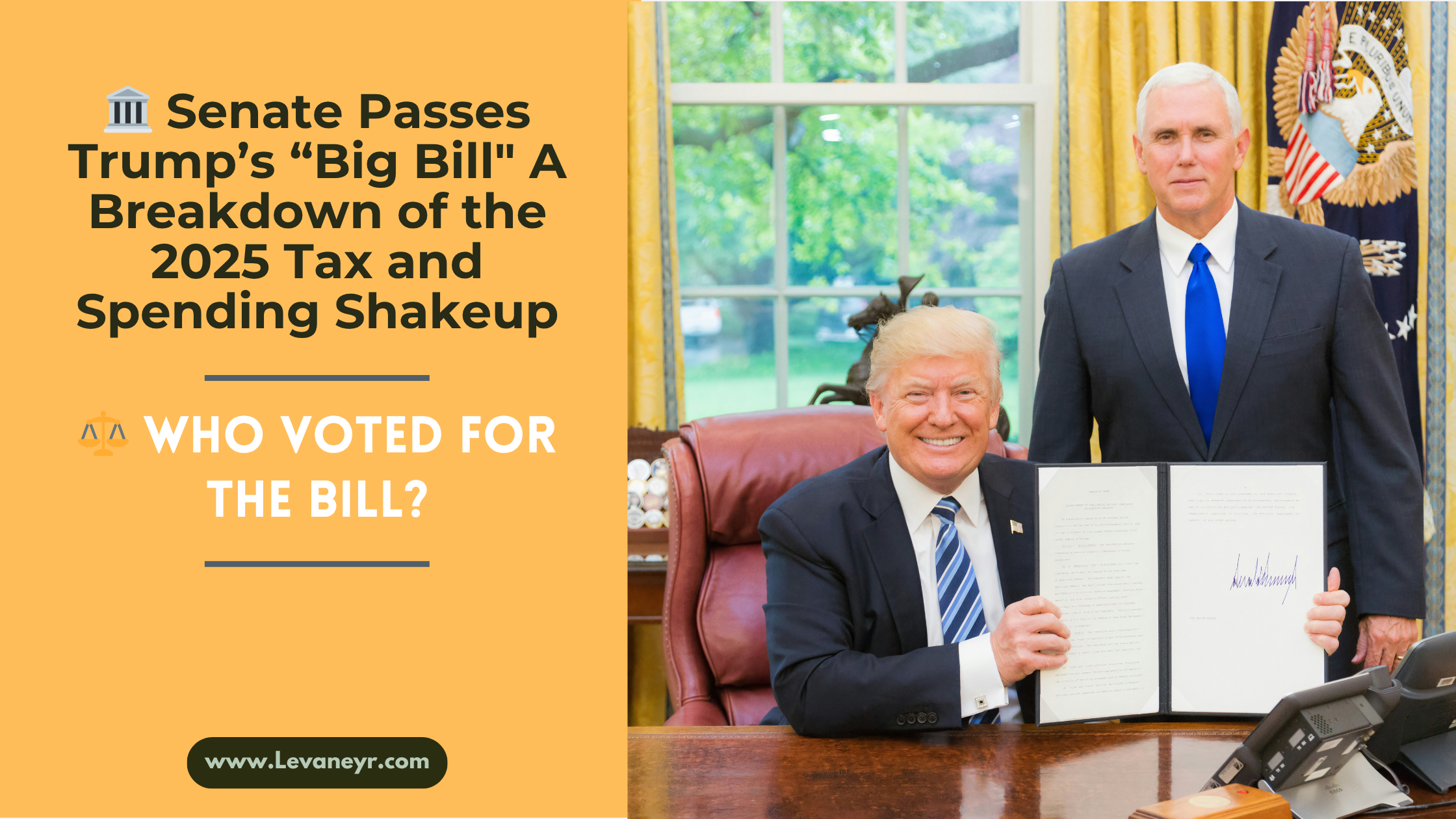In a razor-thin vote of 51-50, the U.S. Senate passed what former President Donald Trump is calling his “Big Bill“—a sweeping and controversial package that aims to redefine tax, spending, and immigration policy in 2025. Vice President JD Vance provided the tie-breaking vote to pass the measure, which was supported by Senate Republicans. It now goes to the House for final passage.

This article explains the bill’s contents, how it affects regular Americans, and what to anticipate in the months ahead.
🧾 What’s Inside the “Big Bill”?
The legislation covers a wide range of issues, but here are the main pillars of the bill:
💰 Massive Tax Cuts
- Corporate tax rate cut from 21% to 17%
- Tax rates for individuals that are modified to benefit higher earnings
- Estate tax threshold increased
- Long-term investments are subject to a lower capital gains tax.
Impact:
Critics argue these cuts benefit the wealthy, while supporters claim the bill will “supercharge economic growth” and investment.
🏥 Deep Cuts to Social Programs
- Medicaid eligibility and funding drastically scaled back
- Food stamps (SNAP) work requirements tightened
- Federal unemployment benefits and housing assistance were cut.
Impact:
Important benefits might be denied to tens of millions of low-income Americans, particularly in states that rely on federal funding for healthcare.
🚔 Funding for Border Enforcement
- $20 billion has been set up to enhance border detention and ICE facilities.
- Green light for controversial Florida migrant facility nicknamed “Alligator Alcatraz”
- More resources for deportation task forces
Impact:
Civil rights organizations have reacted negatively to this, the biggest increase in financing for immigration enforcement in American history.
💵 $3.3 Trillion in Added National Debt
The bill’s tax incentives and spending rise are expected to raise the government debt by $3.3 trillion over a ten-year period, even with benefit reductions.
📢 “We’re making America rich again,” Trump declared, calling it a necessary investment in “freedom and prosperity.”
⚖️ Who Voted for the Bill?
| Party | Votes For | Votes Against |
|---|---|---|
| Republican | 50 | 0 |
| Democrat | 0 | 48 |
| Independent | 0 | 2 |
| Tie-breaker: | Vice President JD Vance (R) |
The House vote is expected before July 4, but conservative Republicans may still object to the bill’s price tag.
📈 What This Means for Everyday Americans
| Category | Positive | Negative |
|---|---|---|
| Taxpayers | Lower taxes for middle & upper class | A higher deficit may lead to inflation |
| Low-income citizens | – | Loss of Medicaid, food, and housing aid |
| Businesses | More profit & investment power | Risk of tax hikes later |
| Immigrants | – | More deportations and detentions |
🌎 Global and Domestic Reactions
- Wall Street reacted positively, with the Dow Jones up 450 points.
- Progressives and activists are planning nationwide protests.
- Concern regarding the U.S. debt trajectory was voiced by European politicians.
📢 Expert Opinions
“This bill prioritizes enforcement and tax relief at the cost of economic stability.”
— Janet Howell, Policy Analyst at Brookings Institute
“It’s bold. It’s aggressive. And it’s exactly what Trump voters were promised.”
— Mark Templeton, Conservative Radio Host
🧠 Final Thoughts
The passing of Trump’s “Big, Beautiful” Bill marks a pivotal shift in American fiscal and social policy. Others caution that it may increase inequality and put pressure on the nation’s financial future, while others celebrate it as a rebirth of the American economy.
📌 Stay Updated with Levaneyr
Want the latest updates on U.S. politics, economics, and policy changes?
👉 Subscribe to our newsletter at Levaneyr.com and stay informed!

